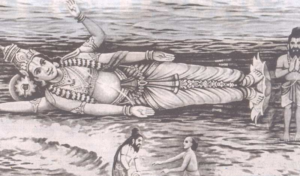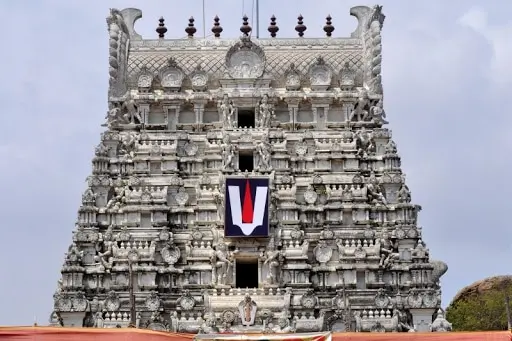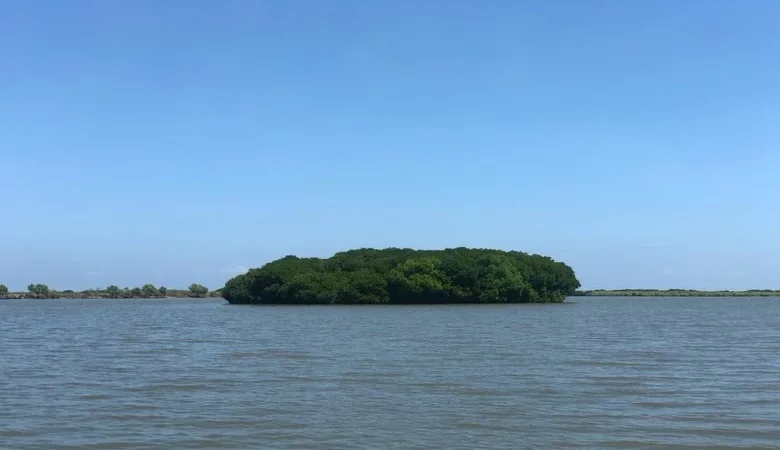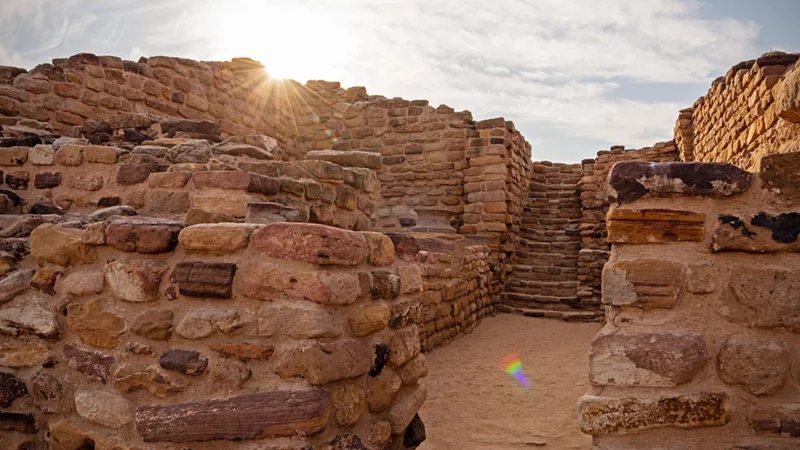The Sthalasayana Perumal Temple is one of the 32 Group of Monuments at Mahabalipuram that is declared a UNESCO World Heritage Site, but unlike others that are maintained by the ASI (Archaeological Survey of India), the temple is administered and maintained by the Hindu Religious and Endowment Department of the Government of Tamil Nadu. Mahabalipuram or Mamallapuram is a historic city, a UNESCO World Heritage Site that is well-preserved to date, speaks volumes of its glory, and is also an ancient port city within the Kānchipuram district of Tamil Nadu, India. During the reign of the Pallava Dynasty, (between the 3rd century CE and 7th century CE), Mahabalipuram was famed for its excellent architecture and sculptures along with beautiful rock-cut monuments and a temple that pull architects, history enthusiasts, and travelers from all over the world. Mahabalipuram is famous for its vast beach, monoliths, stone carvings, and temples and was already a thriving seaport on the Bay of Bengal before this time. A significant amount of coins and other artifacts excavated from this region also indicate a pre-existing trade relation with the Romans even before it became a part of the Pallava Empire.
Sri Sthalasayana Perumal Temple located at Mahabalipuram near Chennai, in the state of Tamil Nadu, is one among the 108 Vaishnavite Divyadesams dedicated to Lord Vishnu. The Lord praised here as Sthalasayana Perumal (the Lord who reclines on the ground with hand on his chest) along with his consort Lakshmi as Nilamangai Thayar and it is believed that Lord Vishnu stayed in this place and have appeared to sage Pundarika. This temple is the 63rd Divyadesam and this place is also known as Thirukadal Mallai. Constructed in the Dravidian style of architecture, the temple is believed to have been built by Pallavas, with later contributions from Medieval Cholas, Vijayanagar Kings, and Madurai Nayaks. Thirumangai Azhwar and Bhoodhath Azhwar sanctify this temple in the Nalayira Divya Prabandam through their hymns. This old text (Divya Prabandham) is the early medieval Tamil canon of the Azhwar saints from the 6th–9th century AD. This town is also believed to be the birthplace of Saint Bhoodhath Azhwar, the second of the twelve Vaishnavite Azhwars. During 1120 CE, the Sri Sthalasayana Perumal temple had expansions by Chola king Vikrama Chola (1118-1135 CE).
History of Sri Sthalasayana Perumal Temple

Greatness of Sthalasayana Perumal Temple
Initially, there were seven temples around the sea shore, the place was then called Seven Temple City – Ezhu Kovil Nagaram in Tamil. All of the Seven Temples were swallowed by the fury of the sea. During that time the place was under the rule of Pallava King Rajasimhan who built three temples, of which two of the temples have been washed away by the fury of the sea again. To protect and preserve this unique statue of Lord Sthalasayana Perumal, the Vijayanagar king, Parankusa, built a temple within the city of Mamallapuram in the 14th century and shifted the Perumal statue to its current location away from the shore. He further built the four Mada streets that circumvent the temple.



Inside Perumal Temple
The Lord is seen in a reclining posture on the ground, holding his hand on the chest, called Upadesa Mudra (beckoning the devotees towards him). Near the Lord Shrine, you can see the idol of sage Pundarika. The Utchavar (procession deity) is known as Ulaguyya Nindran. To the East of the main shrine, there is a sanctum of Goddess Lakshmi, in the form of Nilamangai Thayar. Along with the main two shrines, you can even see other shrines of Andal, Lakshmi Narasimha, Bhoodhath Azhwar, Rama, Hanuman, and the Azhwars around the sanctum. The uniqueness of the temple is that usually Goddess Lakshmi is seated on the left lap of the Lord, while in this temple Goddess is seen sitting on the right lap. There is an ancient rock-cut cave temple dedicated to Varaha Perumal known as Thiruvalaventhai, located around one km south of Thirukadalmallai. The Lord gave darshan as Varaha Perumal with Akilavalli Thayar.
Important Festivals
The Sthalasayana Perumal Temple celebrates several festivals including the Avatara festival of Bhoodhath Azhwar during the Tamil month of Aipasi (October-November), Maasi Magam (Feb-Mar), and Vaikunda Ekadasi.
Temple Timings
Sri Sthalasayana Perumal Temple is open in the mornings between 6:30 am to 12:00 noon and in the evenings from 3:00 pm to 8:30 pm.
Nearby Attractions
Descent of the Ganges (Arjuna’s Penance), Krishna’s Butterball, Shore Temple, Trimurti Cave Temple, Varaha Perumal Cave Temple, Mahishasuramardini Cave Temple, Olakkanneshvara Temple, Tiger Caves, Pancha Rathas, Light House, Maritime Heritage Museum, Seashell Museum.
Places To Visit Nearby
- Thirukkalikundram is about 14km from the Perumal Temple and there is an ancient Shiva temple with a lofty tower at this place. Nearby is a hill called Vedagiri, 160m high, on the top of which also there is a small Shiva temple.
- Vedanthangal Bird Sanctuary is about 60km away from Mahabalipuram. This is one of the major water bird sanctuaries in India.
- Thiruporur is about 16km from the temple and an ancient temple dedicated to Lord Muruga is located here. There are some historical inscriptions on the walls of the temple as well as some interesting sculptures.
- Sadras is 16km away from the Temple and is an old fishing village on the seashore which was once a Dutch settlement. A massive fort with 14 well-cut tombstones attracts the attention of the visitors to the place.
- Pondicherry is about 95 km from the Perumal Temple, famous for Aurobindo Ashram and also referred to as the ‘French Capital of India’.
Best Time To Visit The Temple
As this place is situated on the shores of the Bay of Bengal, there will be a moderate and humid climate around the year and the best time to visit this place is during the cooler months of October to March.
Where To Stay
Accommodation
Most of the resorts, hotels, cottages, and homestays offer budget accommodation.
How To Reach
Road
Sri Sthalasayana Perumal Temple is about 56 km from Chennai and 95 km from Pondicherry. Frequent bus service is available from Chennai to Mahabalipuram on the East Coast Road (ECR) as well as Old Mahabalipuram Road (OMR).
Train
There are no direct trains available to reach this Sthalasayana Perumal Temple. You can cover a part of your journey by train and the nearest station is Chengalapattu railway station, which is around 30 km. After which one must take a bus or a cab to reach this beautiful place.
AIR
The nearest airport is Chennai. You can drive from Chennai, hire a cab, or take one of the several buses that shuttle between Chennai and Sthalasayana Perumal Temple which can be reached in under two hours by road.
Thank you for visiting my blog and stay tuned for more updates related to ancient history on my website: Ancientterminus




